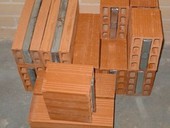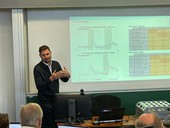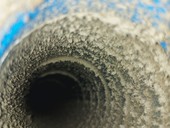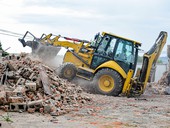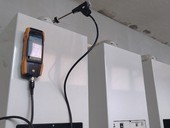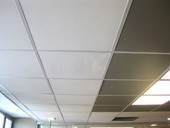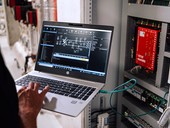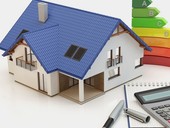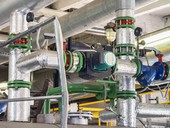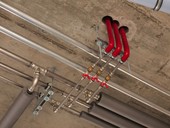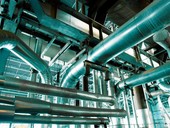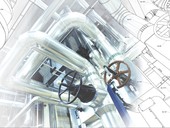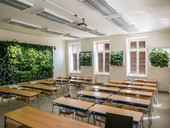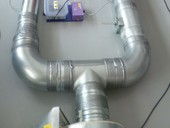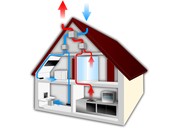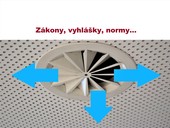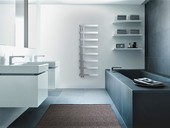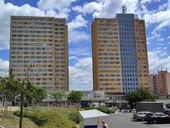This review describes Phase Change Materials (PCMs) as an advanced solution for improving building energy efficiency and thermal comfort. It synthesizes insights into their evolution, categorization, and practical construction applications. It discusses PCMs history, operational principles, diverse typologies, and classification, including composite PCMs. It elucidates specific building applications, illustrating their integration based on recent research. The aim is to provide an overview of PCMs development and underscore their significance as a sustainable instrument for mitigating energy operating costs and elevating thermal comfort in contemporary construction. Concurrently, it delineates current obstacles and proposes strategic research directions, focusing on thermophysical property optimization, economic viability, and ecological sustainability.
Archiv článků od 20.6.2022 do 3.11.2025
This article presents a simulation analysis conducted at the Institute of Environmental Engineering at CTU, as part of the international exercise IEA EBC Annex 82. The aim of the joint exercise, which involved more than ten international research teams from different sectors, was to test and compare different approaches towards achieving energy flexibility in buildings on the basis of a unified exercise assignment. The Czech team based its study on a comprehensive simulation of the energy behaviour of buildings, including a detailed numerical model of the heating, hot water preparation, cooling and ventilation systems. The model was used to study the building potential for providing energy flexibility and future responsibilities of building operators in the context of smart energy grids.
The contribution summarizes the fundamental chapters of the transported standard to re-demolition audit and building dismantling as a standard procedure for structure removal. The purpose of the standard will be to prescribe how the pre-demolition audit should proceed, what information it should contain, and how the deconstruction of the building should take place, in order to achieve the maximum possible utilization of the obtained materials. The motivation is primarily the return of quality raw materials to production and the reduction of primary resource extraction, which is one of the goals of sustainable development.
As a consequence of the growing production and use of asbestos and inorganic fibres, measurement of their concentration in indoor air is of great importance. The relevant legal regulations require the measurement. Various methods were developed for the purpose, based on collecting airborne particles in capillary membrane filters and subsequent determination of their number concentration. Remediation of buildings with fiber-containing construction elements is an essential part of any reconstruction.
Starting from January 1, 2023 (in the Czech Republic), on the basis of § 4, paragraph 1 of Decree No. 264/2020 Coll., on the energy efficiency of buildings, it is necessary for buildings or zones with cooling, humidity control or electricity production to calculate the energy efficiency of the building with an interval of one hour. The subject of the article is an approximation of the basic specifics of the hourly step of calculation and a comparison of the results of the calculation and the assessment of energy intensity in the monthly and hourly step of calculation according to the requirements of the applicable legislation.
The paper relates the results of efficiency tests of specific application methods of surface and air remediation in the indoor environment of buildings, the scope and supply of which have significantly expanded in connection with the ongoing SARS-CoV-2 epidemic. The tests were focused on the most frequently offered procedures, i.e. on the use of open and closed (air purifiers) sources of UV-C radiation, fumigation (use of biocides) and ozonation. Special attention is paid to fulfilling the wording of related EU laws and regulations and compliance with safety principles in the application of these procedures in the work and municipal environments. We also give examples of numerous problems and shortcomings in the application of these technologies.
The presented set of four communications deals with the risk management in favour of safety applied to the operation of pipelines. It respects current professional knowledge and presents it in the concept promoted by the UN, the European Union, the OECD and others. The fourth part contains a conclusion, characteristics of new aspects addressed by the professional sphere for practice and a list of used literature.
The presented set of four communications deals with the risk management in favour of safety applied to the operation of pipelines. It respects current professional knowledge and presents it in the concept promoted by the UN, the European Union, the OECD and others. The third part summarizes the findings on the checklist methodology and provides examples for pipelines.
The presented set of four communications deals with the risk management in favour of safety applied to the operation of pipelines. It respects current professional knowledge and presents it in the concept promoted by the UN, the European Union, the OECD and others. The second part summarizes the knowledge and principles of risk management and lists the sources of risks for the pipeline.
The presented set of four communications deals with the risk management in favour of safety applied to the operation of pipelines. It respects current professional knowledge and presents it in the concept promoted by the UN, the European Union, the OECD and others. The first part introduces terms used in engineering practice, which deals with risks and safety and introduces knowledge that is relevant to pipeline safety.
This post discusses the possibilities of using green walls and their impact on the living environment, micro-climatic conditions and the overall perception of comfort in the interior. Green walls, or vertical gardens, are a desired architectural element of spaces, whether external or internal, for their aesthetic value and significant ability to favorably influence the environment in which we live. Vertical gardens improve acoustics, humidify, freshen and cool the air, capture dust and clean the air. The green wall also functions as a very effective heat and sound insulation system. Any larger green area fundamentally increases the quality of the microclimate, and therefore also people's lives.
The paper focuses on the experimental verification of the use of CO2 as a tracer gas for the detection of leakages in air handling systems, instead of the widely used tracer gas of sulphur hexafluoride (SF6), which is subject to legislative restrictions. Verification of the applicability of CO2 is accompanied by the definition of measurement uncertainties.
The article deals with the currently discussed issue of moisture in the environment of flats. In winter, the low relative humidity of habitable rooms creates a problem for proper ventilation. The authors wonder whether that excessive moisture produced during bathing or showering could be used to improve the quality of the moisture microclimate in the habitable rooms.
Stricter ENB criteria and efforts to enforce a comprehensive view, not only the energy needs associated with housing, but also the place of residence, mode of transport, etc. show that the current situation is not systematically resolved. Meeting the new criteria in existing buildings, many of which have not even undergone basic insulation, will be very challenging, albeit necessary.
zpět na aktuální články
